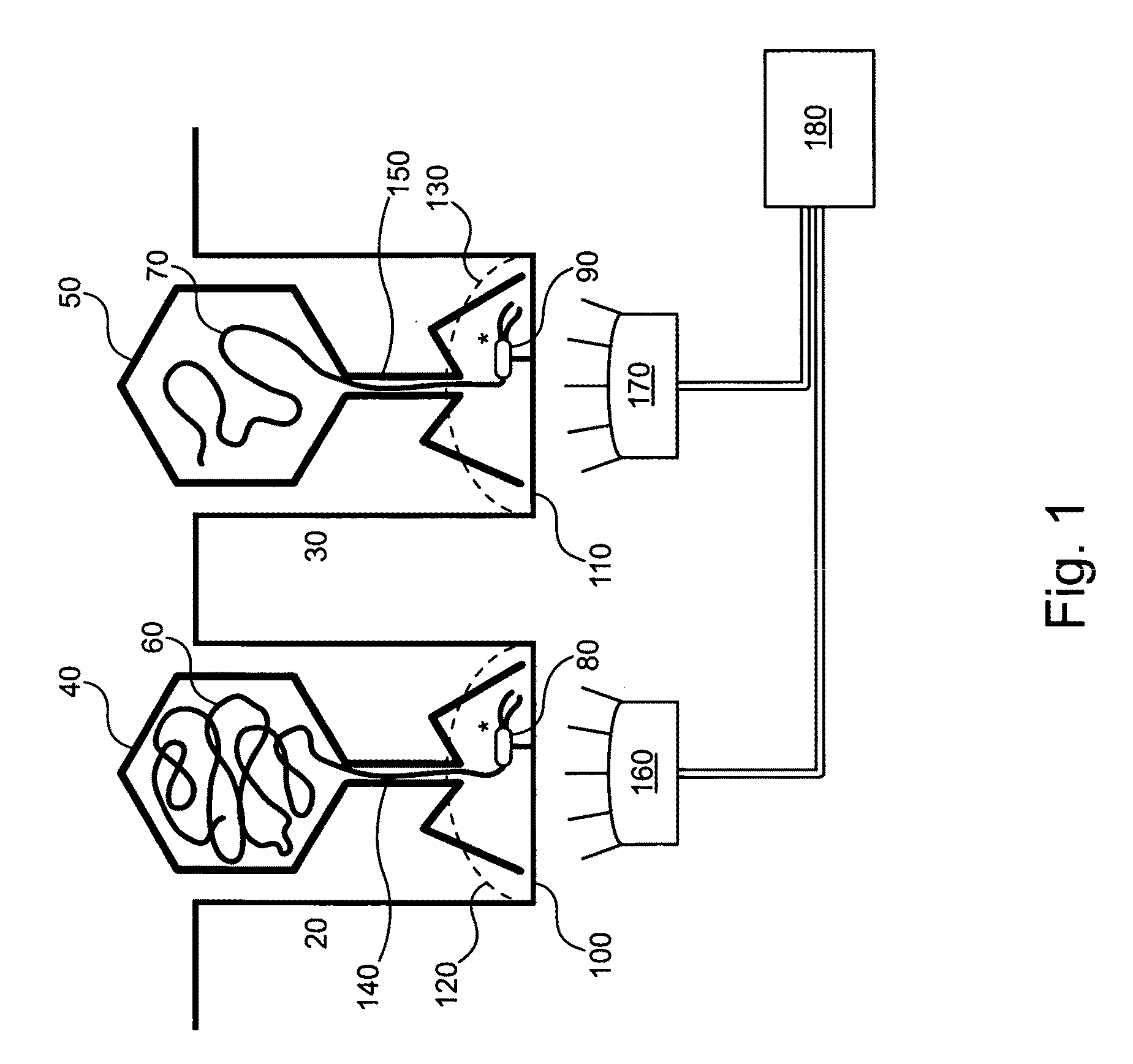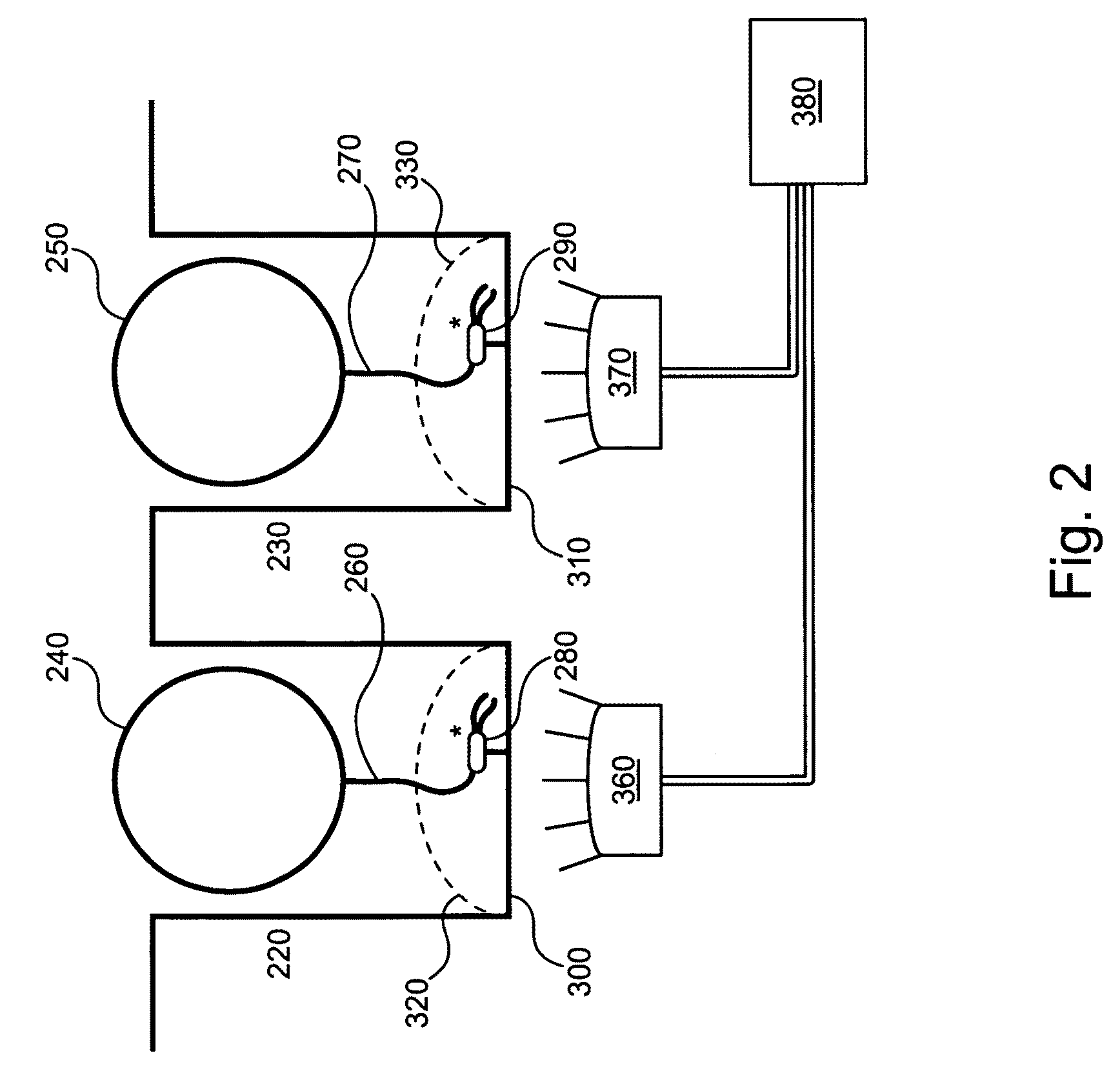Single molecule loading methods and compositions
a single molecule and loading method technology, applied in the field can solve the problems of complicating the analysis of signals observed from the double (or more than double)-loaded region, and affecting the efficiency of single molecule analysis. achieve the effect of increasing the throughput and efficiency of single molecule analysis system
- Summary
- Abstract
- Description
- Claims
- Application Information
AI Technical Summary
Benefits of technology
Problems solved by technology
Method used
Image
Examples
Embodiment Construction
[0086]The invention provides methods and compositions that provide for non-random distribution of target molecules (e.g., analytes such as template nucleic acids and / or relevant enzymes such as polymerases) into small reaction / observation volume arrays, such as ZMW arrays. These methods and compositions can achieve much higher analyte, reagent, and / or reactant loading efficiencies than are typically observed using Poisson-limited random molecule loading methods. General approaches for non-random analyte loading include:
[0087](1) delivering the analyte molecules using a sizing, e.g., particle, delivery system to provide single molecule loading for each molecule type of interest;
[0088](2) creating a single binding site for the analyte in the reaction / observation volume, e.g., by placing or fabricating a nanostructure in the reaction / observation volume, or by selectively forming analyte binding sites in the reaction / observation volume;
[0089](3) reducing the number or availability of bi...
PUM
| Property | Measurement | Unit |
|---|---|---|
| Fraction | aaaaa | aaaaa |
| Fraction | aaaaa | aaaaa |
| Fraction | aaaaa | aaaaa |
Abstract
Description
Claims
Application Information
 Login to View More
Login to View More - R&D
- Intellectual Property
- Life Sciences
- Materials
- Tech Scout
- Unparalleled Data Quality
- Higher Quality Content
- 60% Fewer Hallucinations
Browse by: Latest US Patents, China's latest patents, Technical Efficacy Thesaurus, Application Domain, Technology Topic, Popular Technical Reports.
© 2025 PatSnap. All rights reserved.Legal|Privacy policy|Modern Slavery Act Transparency Statement|Sitemap|About US| Contact US: help@patsnap.com



